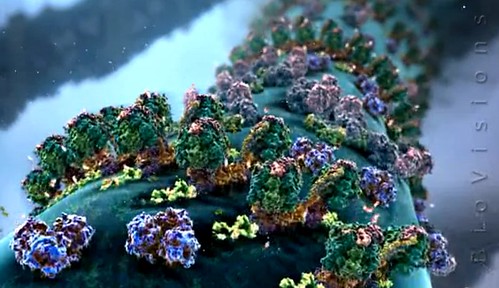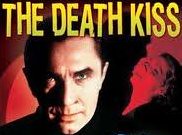 Last night, the curatorial team behind the exhibition Split+Splice: Fragments From the Age of Biomedicine received the Dibner Award for Excellence in Museum Exhibits 2010 for ”outstanding museum work”.
Last night, the curatorial team behind the exhibition Split+Splice: Fragments From the Age of Biomedicine received the Dibner Award for Excellence in Museum Exhibits 2010 for ”outstanding museum work”.
The award was announced at the banquet of the annual meeting of The Society for the History of Technology (SHOT), which is ending today in Tacoma, Wa.
‘The Dibner’ has been awarded since 1987. Earlier recipients include exhibitions from the National Museum of American History and National Air and Space Museum (Smithsonian, Washington DC), Powerhouse Museum (Sidney), Museum of Science and Industry (Manchester), and Museum of London.
This is the first time the Dibner Award has been given to an exhibition produced by a museum in the Nordic countries — and also the first time it has been given to an exhibition focusing on medical technology.
As readers of this blog may remember, Split+Splice is one of the results of the combined research and curatorial project “Danish Biomedicine: 1955-2005: Integrating Medical Museology and the Historiography of Contemporary Biomedicine” here at Medical Museion. The project was financed by the Novo Nordisk Foundation for three years, 2005-2008, but the board of the foundation liked the preliminary results so much that they awarded us yet another year to bring the research results out to a larger public in the form of a public exhibition.
The four postdocs in the project — Jan Eric Olsén, Sniff Andersen Nexø, Søren Bak-Jensen, and Susanne Bauer — were prolonged for another year (with Søren as administrative exhibition leader), and to give a strong aesthetic and design edge to the exhibition, we hired the Canadian artist and designer Martha Fleming as creative leader.
 After more than six months of conceptual development, the team was joined by museum architect Mikael Thorsted and graphic designer Lars Møller Nielsen, both at Studio 8, who did a great job. One of the best design results, in my mind, was the measuring instrument installation above and this ‘container wall’ (for more images, see here and here).
After more than six months of conceptual development, the team was joined by museum architect Mikael Thorsted and graphic designer Lars Møller Nielsen, both at Studio 8, who did a great job. One of the best design results, in my mind, was the measuring instrument installation above and this ‘container wall’ (for more images, see here and here).
This is how Martha described the exhibition:
Split+Splice … is about the inter-relations between the culture of biomedicine and the enormous complexities of 21st century living. The exhibition explores these complexities through the material culture, objects and instruments used by biomedical practitioners in research and in clinical activities.
Much as biomedicine itself, Split+Splice is an innovative hybridisation of complex practices. It is not exactly science communication; it will not teach you comprehensively about the field of biomedicine. It is not exactly old-fashioned history of science; it will not show you a triumphalist progression of miraculous discovery. It is not exactly an art exhibition; it will not leave you with a sense that you have seen inside a solo mind.
(read more here).
And here’s the curatorial team’s acknowledgement of the award:
Split + Splice: Fragments From the Age of Biomedicine was created by a dedicated, interdisciplinary and international team:
Curators: Søren Bak-Jensen (administrative project leader), Susanne Bauer, Martha Fleming (creative project leader), Sniff Andersen Nexø, Jan Eric Olsén, Jonas Paludan (curatorial assistant);
Designers: Mikael Thorsted (exhibition designer), Lars Møller Nielsen (graphic designer);
Medical Museion Staff: Ion Meyer (collections and conservation manager), Nicole Rehné (conservator), Bente Vinge Pedersen (outreach).
In developing the exhibit we pursued two major goals, which were to show that
· aesthetics can be an analytical tool as well as a communication tool and
· epistemological inquiry can guide what an exhibition ends up looking like.
In pursuing these goals, we are also grateful for the assistance we received from a host of professional colleagues who work in the worlds of museums, academe, biomed, fine arts and elsewhere.
Split + Splice was the first major research-based exhibition project at Medical Museion. We wish to thank the Novo Nordisk Foundation which sponsored the exhibition through the integrated research and curatorial project “Danish Biomedicine: 1955-2005: Integrating Medical Museology and the Historiography of Contemporary Biomedicine,” for which Professor Thomas Söderqvist was the Principal Investigator.

 We’ve just set up the installation ‘An Ageing World’ in the main lobby of the Faculty of Health Sciences here in Copenhagen.
We’ve just set up the installation ‘An Ageing World’ in the main lobby of the Faculty of Health Sciences here in Copenhagen.





 Since then we have eagerly waited for Terminator 3. And now the sequel has arrived — a four and a half minute animation, titled
Since then we have eagerly waited for Terminator 3. And now the sequel has arrived — a four and a half minute animation, titled  Last night, the curatorial team behind the exhibition
Last night, the curatorial team behind the exhibition  After more than six months of conceptual development, the team was joined by museum architect Mikael Thorsted and graphic designer Lars Møller Nielsen, both at Studio 8, who did a great job. One of the best design results, in my mind, was the measuring instrument installation above and this ‘container wall’ (for more images, see
After more than six months of conceptual development, the team was joined by museum architect Mikael Thorsted and graphic designer Lars Møller Nielsen, both at Studio 8, who did a great job. One of the best design results, in my mind, was the measuring instrument installation above and this ‘container wall’ (for more images, see  One of my British colleagues just mailed me:
One of my British colleagues just mailed me: